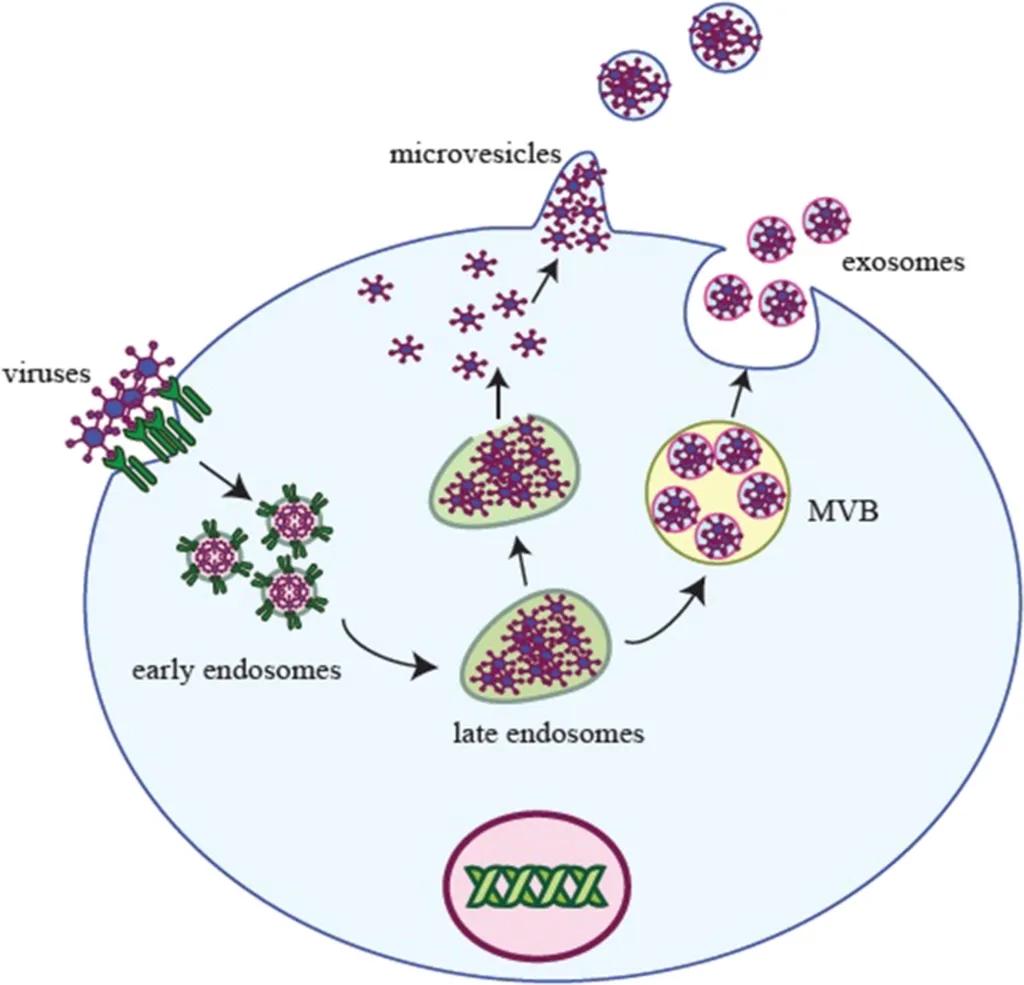In the intricate dance between viruses and their hosts, a new player has taken center stage: exosomes. These tiny, lipid-enclosed vesicles, once thought to be mere cellular garbage bags, are now recognized as crucial communicators in the body, shuttling proteins, nucleic acids, and lipids between cells. But their role in viral infections is only just beginning to be understood, and recent research published in *Virus Research* is shedding light on their complex interactions.
Led by Roberta Della Marca from the Department of Experimental Medicine at the University of Campania “Luigi Vanvitelli” in Naples, Italy, the review explores how viruses hijack the exosome biogenesis machinery to facilitate their replication, spread infection, and evade immune defenses. “Exosomes are like Trojan horses,” Della Marca explains. “They can deliver viral components to recipient cells without triggering the usual immune responses, making them a stealthy way for viruses to spread.”
This research has significant implications for the agriculture sector, where viral infections can decimate crops and livestock. Understanding how exosomes contribute to viral infectivity could lead to new strategies for controlling and preventing these infections. For instance, engineered exosomes could be designed to deliver antiviral drugs or genetic material that interferes with viral replication. “The potential for exosome-based therapies in agriculture is enormous,” says Della Marca. “We could see new treatments that are more targeted, more effective, and less likely to harm beneficial organisms.”
Moreover, the review highlights the need for methodological standardization in exosome research, a critical step towards translating these findings into practical applications. As the field advances, we can expect to see a surge in exosome-based technologies, from diagnostic tools to therapeutic interventions, reshaping how we approach viral infections in both humans and animals.
The study also underscores the importance of interdisciplinary research, integrating findings from human and animal viral infections to gain a more comprehensive understanding of these complex interactions. “By looking at the bigger picture, we can identify common mechanisms and develop broad-spectrum solutions,” Della Marca notes.
As we delve deeper into the world of exosomes, we are not just uncovering the secrets of viral infections; we are opening up new avenues for innovation and discovery. The future of agriculture, and indeed, human health, may well hinge on these tiny, mighty vesicles.

